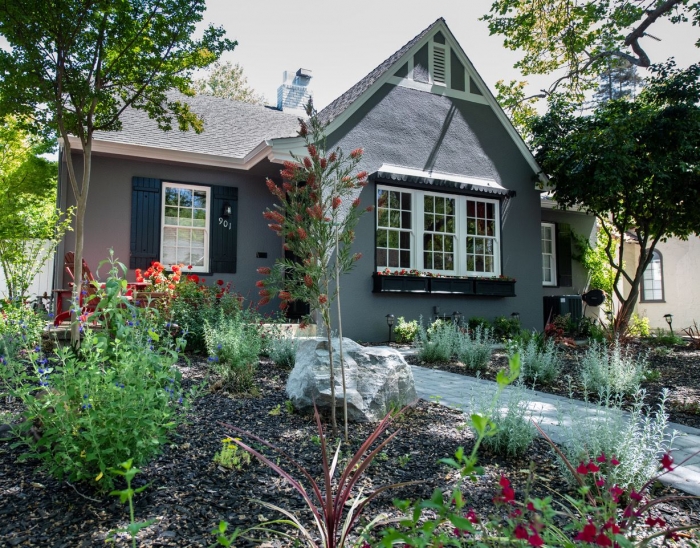
California is experiencing its third consecutive dry year, and while dry spells aren’t new, the current severe drought conditions call for an increase in water conservation efforts inside and outside of homes. Replacing the lawn with water smart plants is one way to take immediate water saving action and have a direct impact on the state’s ongoing drought.
The Save Our Water program is debunking three lawn replacement myths to help encourage homeowners to prepare their landscape for California’s ongoing drought. Most water waste happens in the yard, and removing grass lawns and landscaping with native plants is one of the best ways to reduce water use.
“By transforming your lawn to a drought-tolerant landscape, you’ll save time and money while doing what’s best for our environment,” said Margaret Mohr, deputy director of communications of the California Department of Water Resources. “Updating the outside of your home and landscaping with native plants while also implementing indoor water-saving habits are some of the most effective ways to significantly save California’s water.”
MYTH 1: Drought tolerant plants need a lot of care and are hard to grow.
FACT: Drought tolerant plants require little to no water or attention! Replacing grass lawns with native plants can reduce the amount of time and energy it takes to upkeep the yard. Drought-tolerant landscaping also decreases outdoor watering and removes the need for a lawn mower.
MYTH 2: It costs more money to redo a lawn with native plants than it does to water grass.
FACT: Planting California native drought-tolerant plants can save 30 to 60 gallons of water for 1,000 square feet each time the lawn is watered, which provides water bill reductions. Local water agencies may also offer rebates to residents who replace their grass with water-efficient landscaping.
MYTH 3: Drought tolerant plants won’t be as appealing as a grass lawn.
FACT: There are a variety of beautiful, drought-tolerant plants that come in many colors, shapes, and sizes. Native plants can be incorporated into any design and are much more diverse than grass. Creativity and uniqueness can be reflected with the wide range of water-wise plants.
California’s drought condition will worsen if steps are not implemented to save as much water as possible. Transforming lawns and applying other water-saving tips, such as taking shorter showers and turning off the faucet while brushing teeth can help California’s water last. For more water conservation resources and tips, visit saveourwater.com.







